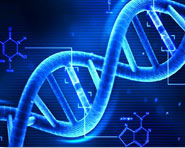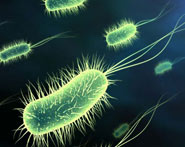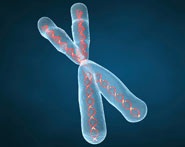


 النبات
النبات
 الحيوان
الحيوان
 الأحياء المجهرية
الأحياء المجهرية
 علم الأمراض
علم الأمراض
 التقانة الإحيائية
التقانة الإحيائية
 التقنية الحيوية المكروبية
التقنية الحيوية المكروبية
 التقنية الحياتية النانوية
التقنية الحياتية النانوية
 علم الأجنة
علم الأجنة
 الأحياء الجزيئي
الأحياء الجزيئي
 علم وظائف الأعضاء
علم وظائف الأعضاء
 الغدد
الغدد
 المضادات الحيوية
المضادات الحيوية| Pathogenesis and Spectrum of Disease of Streptococcus Pneumonia and Viridians Streptococci |
|
|
|
Read More
Date: 20-3-2016
Date: 21-3-2016
Date: 1-3-2016
|
S. pneumoniae contains the C polysaccharide unrelated to the Lancefield grouping and is still one of the leading causes of morbidity and mortality. The organism is the primary cause of bacterial pneumonia, meningitis, and otitis media. The antiphagocytic property of the polysaccharide capsule is associated with the organism’s virulence. There are more than 90 different serotypes of encapsulated strains of S. pneumoniae. Nonencapsulated strains are avirulent. The organism may harmlessly inhabit the upper respiratory tract with a 5% to 75% carriage rate in humans. S. pneumoniae is capable of spreading to the lungs, paranasal sinuses, and middle ear. In addition, this organism accesses the bloodstream and the meninges to cause acute, purulent, and often life threatening infections.
S. pneumoniae is capable of mobilizing inflammatory cells mediated by its cell wall structure, including peptidoglycan, teichoic acids, and a pneumolysin. The pneumolysis activates the classical complement pathway. The pneumolysin mediates suppression of the oxidative burst in phagocytes providing for effective evasion of immune clearance. In addition, the organism contains phosphorylcholine within the cell wall, which binds receptors for platele- activating factor in endothelia cells, leukocytes, platelets, and tissue cells of the lungs and meninges pro viding for entry and spread of the organism.
The viridans (greening) streptococci and Abiotrophia spp. (formally known as nutritionally variant streptococci) are a heterogenous group consisting of alpha hemolytic and nonhemolytic species generally considered to be opportunistic pathogens of low virulence. The organisms colonize the gastrointestinal and genitourinary tract. These organisms are not known to produce any factors that facilitate invasion of the host. However, when access is gained, a transient bacteremia occurs and endocarditis and infections at other sites in compromised patients may result.



|
|
|
|
لشعر لامع وكثيف وصحي.. وصفة تكشف "سرا آسيويا" قديما
|
|
|
|
|
|
|
كيفية الحفاظ على فرامل السيارة لضمان الأمان المثالي
|
|
|
|
|
|
|
شعبة مدارس الكفيل: مخيَّم بنات العقيدة يعزِّز القيم الدينية وينمِّي مهارات اتخاذ القرار لدى المتطوِّعات
|
|
|